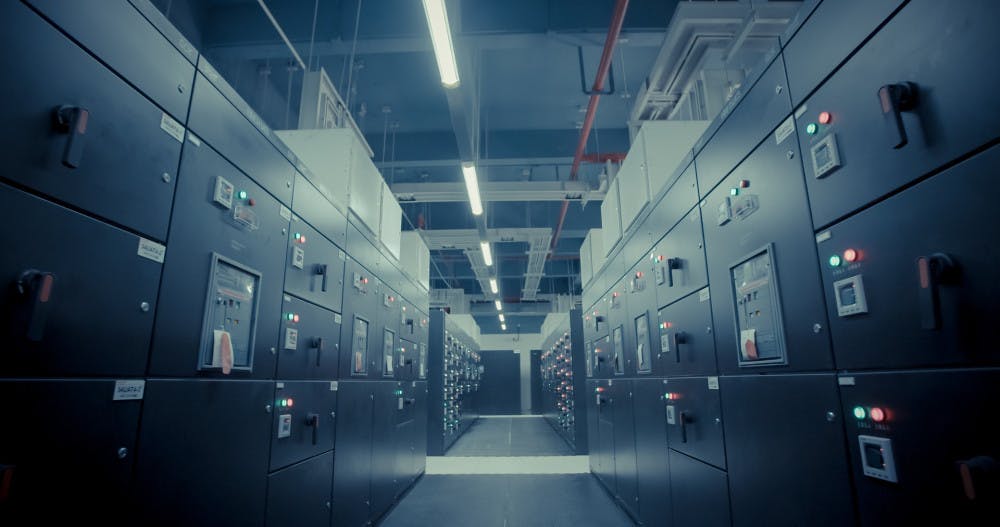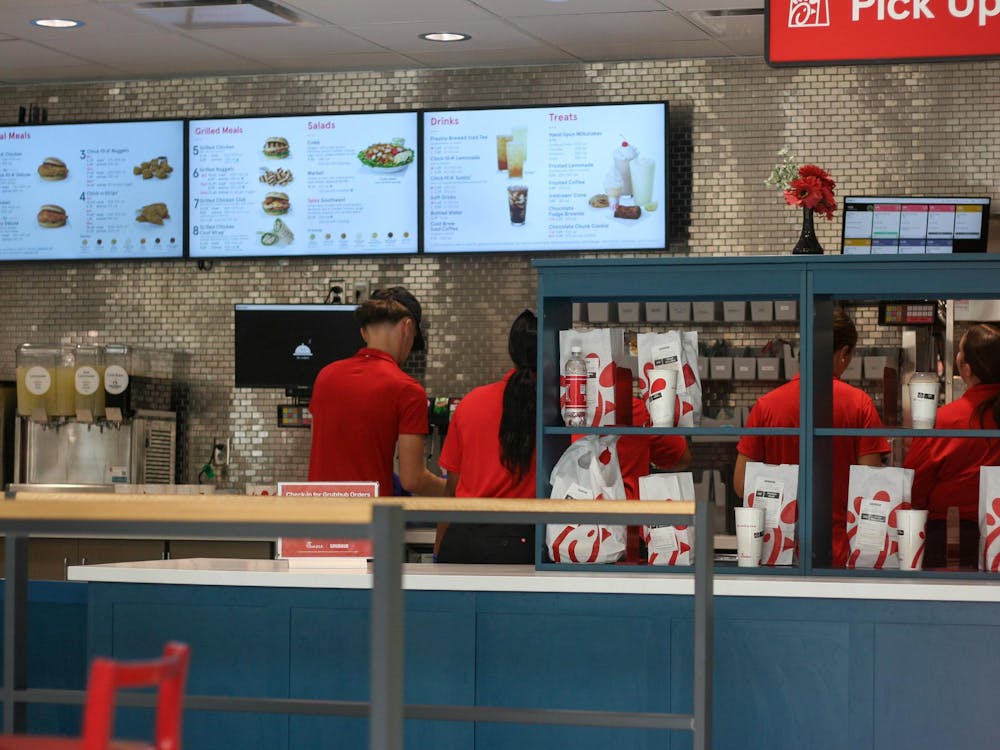By: Grace Berry
According to the Department of Energy, data centers are responsible for about 1.8 percent of total U.S. electricity use, and from 2000 to 2016, data center electricity use increased 280 percent. Data centers account for more power usage than most people realize, and 5G networks will use significantly more energy than 4G. These increases have negatively impacted the environment and will continue to do so if left unchecked.
Data centers fly under the radar in terms of how much power they use. They are built like huge factories, and they have thousands of servers lining rows so vast employees sometimes use scooters to navigate them. Each server requires sufficient cooling to function, which is a huge contributor to the power usage. Data centers use power usage effectiveness (PUE) to measure the ratio of power used by the facility compared to that used to power the IT systems, which are equipment that process and store information. For example, a PUE of 1.5 means for every dollar spent on IT power, another 50 cents are spent to keep the systems housed and cooled. The U.S. aimed to have a PUE of 1.5 or less by 2018, but the average PUE as of 2021 is closer to 1.8, which is significantly higher than the acceptable range. Most money spent on data centers is for housing and cooling. It has been shown that equipment can handle some heat, but data centers still waste airflow to keep rooms frigid. As a matter of fact, in a conventional data center, air conditioning can consume 40 percent of the energy bill.
Overall, data centers are not as efficient as they should be because they waste money on excess energy. While data centers can use exorbitant amounts of energy, it is important to look at specific examples of energy usage that are becoming increasingly dominant in the world today, and here are some of those examples.
We live in an age of iPhones, iPads, and many other pieces of technology that use a lot of power. Most people have probably seen “3G” or “4G LTE” in the corner of their screens, which refers to the third-generation or fourth-generation cellular network. Each generation adds various capabilities and supports new applications. Now we are moving into an era of 5G, which is both exciting and problematic.
It is estimated that, by 2025, 5G will lead to a fourfold global mobile data traffic increase. This could potentially cause an overall increase in network energy consumption of up to 170 percent by 2026. To support 5G, network sites must be upgraded with more IT equipment, which continues to increase energy consumption. IT equipment, just as it does in data centers, produces heat that must be removed because the equipment is heat sensitive. Cooling those systems requires more energy. It’s easy to get swept up by the promise of 5G: faster data processing and computing, lower latency. Yes, 5G will be more efficient, but the massive increase in the number of sites and energy demands will result in more energy consumption – something we should be trying to avoid for the sake of global health. Data centers and 5G networks use a lot of power, but it’s difficult to understand what this means without looking at their environmental impacts. Increased energy consumption by IT systems is negatively affecting the environment. It is estimated that IT systems are responsible for about 5 percent of the world’s carbon dioxide emissions.
An additional issue is the waste of water for cooling towers, which cools the air used to cool all that IT equipment. In 2014, U.S. data centers used about 100 billion liters of water. One popular solution is to simply locate data centers in cool climates and blow outside air into them, but this has yet to be fully implemented. Getting rid of compression chillers and cooling towers is crucial if energy and water usage are to be reduced.
As you can see, 5G networks and data centers are not focusing on sustainability. While some steps are being taken with the environment in mind, we still need to hold these industries accountable. In order to achieve significant reductions in electricity use, industries need bold strategies. For far too long people have been scared to make dramatic changes to power usage because there will be drawbacks. However, now is the time to switch to hybrid systems, using alternative sources such as solar power, and we must demand not only progress, but widespread reform from the U.S. and other countries around the world.
Photo courtesy of Pixabay.




